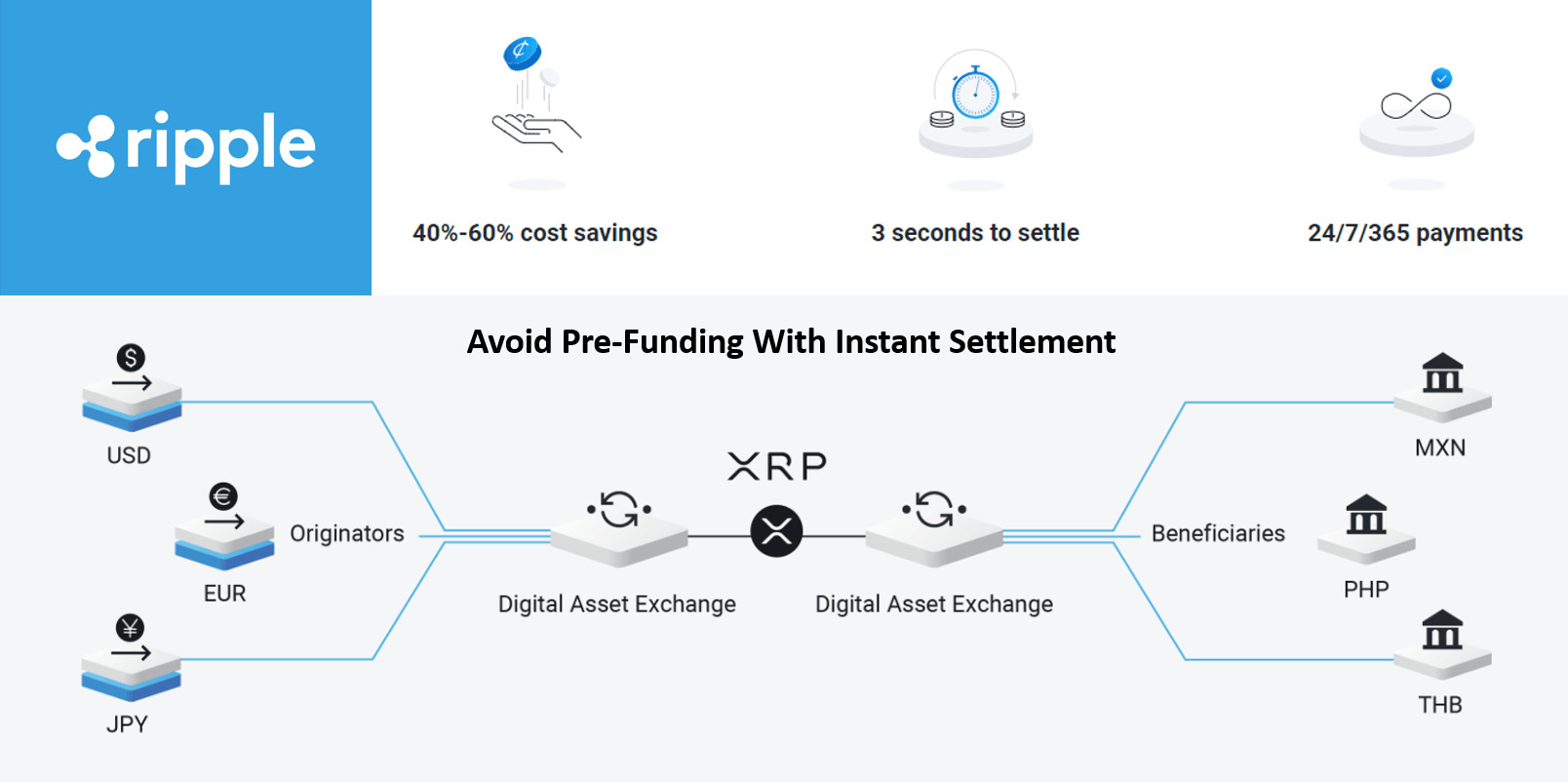The Rise of Digital Currency
Over the past decade, the world has witnessed a significant rise in the popularity and adoption of digital currency. Also known as cryptocurrencies, these virtual forms of currency offer numerous advantages over traditional fiat currencies. Digital currencies, such as Bitcoin and Ethereum, have gained traction among individuals, businesses, and even governments.
One of the primary reasons behind the popularity of digital currency is its decentralized nature. Unlike traditional currencies that are controlled by central banks, digital currencies are based on blockchain technology, which operates on a peer-to-peer network. This decentralization eliminates the need for intermediaries and allows for secure and transparent transactions.
Furthermore, digital currency offers enhanced privacy compared to traditional payment methods. Transactions made with digital currency are pseudonymous, meaning that users are identified by their wallet addresses rather than their personal information. This anonymity provides a level of security and protection against identity theft.
Another significant factor contributing to the rise of digital currency is its potential for financial inclusivity. Traditional banking services are often inaccessible to many individuals, especially those in underdeveloped regions or who lack access to proper identification. Digital currencies bridge this gap by enabling anyone with an internet connection to participate in the global financial system.
Moreover, the technology behind digital currency has been continuously evolving, paving the way for innovative applications. Smart contracts, enabled by blockchain technology, have the potential to revolutionize various industries, such as insurance, real estate, and supply chain management. These contracts automate and enforce the terms of an agreement, eliminating the need for intermediaries and reducing costs.
It is worth noting that the rise of digital currency has not been without challenges. Volatility is one of the main concerns associated with cryptocurrencies. The value of digital currencies can fluctuate significantly, making them a risky investment option. Additionally, the use of digital currency for illicit activities, such as money laundering and tax evasion, has raised regulatory concerns.
Despite these challenges, the adoption of digital currency continues to accelerate. Many countries are exploring the integration of digital currencies into their financial systems. Central banks are researching and developing central bank digital currencies (CBDCs) to enhance financial stability and efficiency.
In summary, the rise of digital currency signifies a shift towards a more decentralized and inclusive financial system. With its potential for increased privacy, financial accessibility, and technological innovation, digital currency is set to have a profound impact on the way we transact and interact economically.
The Advantages of Digital Currency
Digital currency, also known as cryptocurrency, has gained prominence in recent years due to several key advantages it offers over traditional fiat currencies. These advantages have contributed to the widespread adoption and acceptance of digital currencies in various economic sectors.
One of the primary advantages of digital currency is the enhanced security it provides. Transactions conducted with digital currency, such as Bitcoin or Ethereum, are secured through robust cryptographic protocols. This ensures that the transactions are tamper-proof and resistant to fraud. Unlike traditional financial systems, where sensitive personal information is vulnerable to theft and misuse, digital currency transactions protect users’ identities through pseudonymous addresses, maintaining privacy and reducing the risk of identity theft.
Another major advantage of digital currency is the speed and efficiency of transactions. Traditional banking systems often involve intermediaries, such as banks or payment processors, which can cause delays and increase transaction costs. In contrast, digital currency transactions are executed on decentralized networks, enabling direct peer-to-peer transactions. These transactions are typically processed quickly and at a lower cost, especially for cross-border payments, which can be expensive and time-consuming in traditional banking systems.
Furthermore, digital currency promotes financial inclusivity by providing access to financial services for individuals who are unbanked or underbanked. In many parts of the world, traditional banking services are unavailable or inaccessible to a significant portion of the population. Digital currency, being decentralized and accessible through internet-enabled devices, allows anyone with internet access to participate in the global financial ecosystem. This promotes financial inclusion and empowers individuals to manage their finances independently.
Additionally, the use of digital currency eliminates geographical limitations in financial transactions. Traditional banking systems often impose restrictions and fees for cross-border transactions, making international trade and remittances costly and time-consuming. Digital currency, on the other hand, enables seamless and cost-effective international transactions, making it a viable solution for global commerce.
Moreover, digital currency promotes innovation and entrepreneurship. The underlying blockchain technology that powers digital currencies has the potential to revolutionize various industries. Smart contracts, for instance, enable automated and self-executing agreements, eliminating the need for intermediaries and reducing costs. This opens up new opportunities for businesses and individuals to create innovative applications and services that leverage the transparency, security, and efficiency of digital currencies.
In summary, the advantages of digital currency are numerous and impactful. Enhanced security, fast and cost-effective transactions, financial inclusivity, global accessibility, and fostering innovation are just a few of the benefits it brings to individuals, businesses, and economies. As digital currencies continue to evolve and gain acceptance, their advantages will play a significant role in shaping the future of the financial landscape.
The Roadblocks to Implementation
While digital currency has seen significant growth and adoption in recent years, there are various challenges and roadblocks that hinder its widespread implementation. These obstacles must be overcome to leverage the full potential of digital currency in the global financial system.
Regulatory concerns represent one of the major roadblocks to the widespread implementation of digital currency. Governments and regulatory bodies have struggled to keep up with the fast-paced advancements in digital currency technology. There is a need for comprehensive and cohesive regulatory frameworks to address issues such as consumer protection, anti-money laundering, and tax evasion associated with digital currency transactions. Striking the right balance between fostering innovation and ensuring the integrity of the financial system remains a challenge.
Another critical roadblock is the volatility of digital currencies. The value of cryptocurrencies can fluctuate dramatically within short periods. This volatility poses challenges for merchants and consumers who are hesitant to rely on a currency with an unpredictable value. To gain wider acceptance, digital currencies need to demonstrate stability and establish trust among users.
Scalability is yet another obstacle to the implementation of digital currency. As the popularity and adoption of digital currencies increase, the underlying blockchain technology faces scalability challenges. The current blockchain infrastructure may not be capable of handling the volume of transactions required for widespread use. Overcoming scalability issues is crucial for digital currencies to effectively compete with traditional payment systems and accommodate the growing transaction demand.
Interoperability is also a significant roadblock to the implementation of digital currency. With numerous cryptocurrencies in existence, each with its own protocols and standards, interoperability between different digital currency networks becomes complex. Establishing a standardized framework that allows for easy integration and communication between various digital currencies is essential to facilitate seamless transactions and enhance user experience.
Furthermore, public perception and trust play a vital role in the implementation of digital currency. Despite the growing popularity, there is still a general lack of understanding and awareness among the public regarding digital currency. The association of digital currencies with illicit activities and scams has created skepticism and mistrust. Educating the public about the benefits, risks, and proper usage of digital currency is crucial to build trust and foster wider acceptance.
In summary, several roadblocks hinder the widespread implementation of digital currency. Regulatory concerns, volatility, scalability challenges, interoperability issues, and public perception all pose significant obstacles. Overcoming these roadblocks requires collaborative efforts between governments, regulators, industry players, and the public to create a favorable ecosystem that enables the full integration of digital currency into the global financial system.
The Current State of Digital Currency
The current state of digital currency is marked by increasing adoption, evolving regulations, and ongoing technological advancements. Over the years, digital currencies have gained significant traction, both as a medium of exchange and an investment asset.
Bitcoin, the first and most well-known digital currency, continues to dominate the market with a substantial share of the total cryptocurrency market capitalization. However, numerous altcoins, such as Ethereum, Ripple, and Litecoin, have emerged as viable alternatives and have seen substantial growth in their user base and market value.
In terms of adoption, major companies and institutions are increasingly accepting digital currencies as a form of payment. Major online retailers, including Microsoft and Overstock.com, now allow customers to make purchases using digital currencies. Furthermore, financial services companies are exploring ways to integrate digital currencies into their services, such as offering cryptocurrency trading and custody solutions.
Regulatory efforts surrounding digital currencies differ across countries and jurisdictions. Some countries have embraced digital currencies and implemented comprehensive regulations to protect consumers and prevent illicit activities. Others have taken a more cautious approach, monitoring the space closely and gradually establishing regulatory frameworks.
Central banks are also taking notice of digital currencies. Several countries, including China, Sweden, and the Bahamas, have begun exploring the development of central bank digital currencies (CBDCs) to modernize their monetary systems. CBDCs aim to combine the advantages of digital currencies with the stability and control of traditional fiat currencies, potentially revolutionizing how money is issued, transferred, and managed.
Technological advancements in the digital currency space continue to push forward. Layer 2 solutions, such as the Lightning Network for Bitcoin and the Ethereum 2.0 upgrade, aim to address scalability issues and improve transaction speed. Other projects, such as decentralized finance (DeFi) platforms, leverage smart contracts to provide decentralized lending, borrowing, and trading services.
Despite the progress and increasing acceptance, digital currencies still face challenges and uncertainties. Volatility remains a concern, and regulatory frameworks continue to evolve. Issues related to security, privacy, and scalability need to be addressed to ensure the long-term sustainability and mainstream adoption of digital currencies.
In summary, the current state of digital currency is characterized by growing adoption, evolving regulations, and ongoing technological advancements. Major players across industries are embracing digital currencies, and governments are exploring their potential through initiatives like CBDCs. As technology and regulatory landscapes continue to evolve, the future of digital currency holds immense potential for transforming the global financial system.
The Potential Impact on the Economy
Digital currency, with its unique characteristics and growing adoption, has the potential to make a significant impact on the global economy. As this innovative form of currency continues to evolve, it brings forth various potential benefits and challenges that can reshape economic systems.
One of the potential impacts of digital currency on the economy is the reduction in transaction costs. Traditional banking systems involve intermediaries that add fees and processing time to transactions. Digital currency allows for direct peer-to-peer transactions, eliminating the need for intermediaries and reducing costs. This can lead to increased efficiency in financial transactions, especially for cross-border payments, which are typically expensive and time-consuming.
Moreover, digital currency can foster financial inclusion by providing access to financial services for individuals who are unbanked or underbanked. In many parts of the world, traditional banking infrastructure is limited or inaccessible. Digital currencies, accessible through internet-enabled devices, enable individuals with internet access to participate in the global financial system. This can lead to economic empowerment and increased economic activity in underserved communities.
The potential impact of digital currency also extends to businesses. Digital currencies provide opportunities for businesses to reach a global customer base without the need for traditional banking intermediaries. By accepting digital currencies as payment, businesses can expand their reach and tap into new markets, potentially driving economic growth. Additionally, the underlying blockchain technology powering digital currencies enables transparent supply chain management, reducing fraud and ensuring product authenticity.
The adoption of digital currency can also stimulate innovation and entrepreneurship. The technology behind digital currency, particularly blockchain, has the potential to revolutionize various industries. Smart contracts, for example, can automate and enforce contractual agreements without the need for intermediaries, opening up new possibilities for efficiency and cost savings. This can spur the development of innovative applications and services, creating new economic opportunities and driving economic growth.
While the potential impacts of digital currency are promising, there are also challenges that need to be considered. Volatility remains a significant concern, as the value of digital currencies can fluctuate greatly within short periods. This poses risks for businesses and consumers alike. Additionally, regulatory frameworks need to be developed to address issues such as consumer protection, fraud prevention, and anti-money laundering measures.
In summary, the potential impact of digital currency on the economy is significant. From reducing transaction costs and fostering financial inclusion to driving innovation and entrepreneurship, digital currencies present opportunities to reshape economic systems and drive economic growth. However, addressing challenges such as volatility and regulatory concerns is crucial to unlock the full potential of digital currency on the global economy.
Future Predictions for Digital Currency
The future of digital currency holds tremendous potential for transformative changes in the global financial landscape. As this innovative technology continues to evolve, several predictions can be made regarding the direction in which digital currency is headed.
One major prediction is that digital currency will become more widely accepted as a medium of exchange. As consumer awareness and understanding of digital currencies increase, more businesses will adopt them as a form of payment. This will lead to greater acceptance by merchants, both online and offline, across various industries.
Additionally, the development of central bank digital currencies (CBDCs) is expected to gain momentum in the coming years. Various countries have already started exploring the implementation of CBDCs to modernize their monetary systems. This trend is likely to continue as central banks recognize the benefits of digital currency in terms of efficiency, transparency, and financial inclusion.
Furthermore, advancements in blockchain technology will play a significant role in shaping the future of digital currency. Innovations such as improved scalability, interoperability, and privacy will address some of the current challenges associated with digital currencies. Layer 2 solutions and upgrades to existing blockchain networks will enhance transaction speeds and reduce costs, making digital currencies more viable for everyday transactions.
Another prediction is the increased integration of digital currency into the financial sector. Traditional financial institutions will leverage digital currencies to streamline processes such as remittances, cross-border transactions, and asset management. This integration will bridge the gap between legacy financial systems and emerging digital ecosystems.
The emergence of decentralized finance (DeFi) platforms is also expected to gain momentum. DeFi refers to the use of digital currency and blockchain technology to provide traditional financial services, such as lending, borrowing, and trading, in a decentralized manner. These platforms have the potential to disrupt traditional financial intermediaries by offering more efficient and accessible financial services.
Moreover, digital currency is predicted to play a significant role in emerging technologies such as the Internet of Things (IoT) and artificial intelligence. As IoT devices become more prevalent, digital currencies can facilitate seamless and secure machine-to-machine transactions. Similarly, in the realm of artificial intelligence, digital currencies can enable trustless and autonomous transactions between AI-powered systems.
However, it is important to note that digital currency still faces challenges and uncertainties. Regulatory frameworks need to be developed and adapted to ensure the integrity of the financial system and protect consumers. Moreover, addressing concerns related to security, privacy, and volatility is crucial for wider adoption and acceptance.
In summary, the future of digital currency is bright and holds enormous potential for transformative changes. Increased acceptance, the development of CBDCs, advancements in blockchain technology, integration into the financial sector, and the rise of DeFi platforms are among the key predictions. As the technology continues to evolve and solutions to current challenges are addressed, digital currency will shape the future of finance and revolutionize the way we transact and interact economically.

























